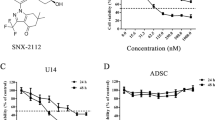Abstract
Secreted protein acidic and rich in cysteines-like 1 (SPARCL1) is implicated in tumor progression and considered as a tumor suppressor. Aim of the study is to investigate the role of SPARCL1 in the regulation of tumor biology. SPARCL1 expression in human cervical cells was determined through western blot and RT-PCR. The effects of SPARCL1 overexpression on cell proliferation, migration and invasion were evaluated through CCK8 assay, colony formation assay, Wound healing assay and Transwell assay, respectively. The gain function of Secreted phosphor protein 1 (SPP1) was also evaluated in these cell functions. We observed that SPARCL1 expression at protein levels and transcription levels was lower in HeLa cells than that in Ect1/E6E7 cells. When SPARCL1 was overexpressed in HeLa cells, cell proliferation, migration and invasion were greatly repressed. Additionally, SPARCL1 overexpression markedly downregulated SPP1 expression at transcription levels. Mechanistical study revealed that SPP1 overexpression could greatly counteract the effects of SPARCL1 overexpression on the aforementioned cell processes and inhibit the phosphorylation of focal adhesion kinase (FAK) and extracellular regulated protein kinases (ERK). Our findings indicated that HeLa cells overexpressing SPARCL1 showed weaker abilities of proliferation, migration and invasion, and its effects could be neutralized by SPP1 overexpression possibly via FAK/ERK pathway. The relationship of SPARCL1 and SPP1 could help us to further understand the pathogenesis of cervical cancer and SPARCL1/SPP1 could be beneficial therapeutic targets in cervical cancer.





Similar content being viewed by others
References
Braz NS, Lorenzi NP, Sorpreso IC, Aguiar LM, Baracat EC, Soares-Júnior JM (2017) The acceptability of vaginal smear self-collection for screening for cervical cancer: a systematic review. Clinics (Sao Paulo) 72:183–187
Bradshaw AD (2012) Diverse biological functions of the SPARC family of proteins. Int J Biochem Cell Biol 44:480–488
Wu DM, Shi J, Liu T, Deng SH, Han R, Xu Y (2018) Integrated analysis reveals down-regulation of SPARCL1 is correlated with cervical cancer development and progression. Cancer Biomark 21:355–365
Chen X, Xiong D, Ye L, Yang H, Mei S, Wu J, Chen S, Mi R (2019) SPP1 inhibition improves the cisplatin chemo-sensitivity of cervical cancer cell lines. Cancer Chemother Pharmacol 83(4):603–613
Shanthi E, Krishna MH, Arunesh GM, Venkateswara Reddy K, Sooriya Kumar J, Viswanadhan VN (2014) Focal adhesion kinase inhibitors in the treatment of metastatic cancer: a patent review. Expert Opin Ther Pat 24:1077–1100
Liang Y, Zhang T, Shi M, Zhang S, Guo Y, Gao J, Yang X (2019) Low expression of NCOA5 predicts poor prognosis in human cervical cancer and promotes proliferation, migration, and invasion of cervical cancer cell lines by regulating notch3 signaling pathway. J Cell Biochem 120:6237–6249
Zeng J, Ma YX, Liu ZH, Zeng YL (2019) LncRNA SNHG7 contributes to cell proliferation, invasion and prognosis of cervical cancer. Eur Rev Med Pharmacol Sci 23:9277–9285
Song JY, Lee JK, Lee NW, Yeom BW, Kim SH, Lee KW (2009) Osteopontin expression correlates with invasiveness in cervical cancer. Aust N Z J Obstet Gynaecol 49:434–438
Gagliardi F, Narayanan A, Gallotti AL, Pieri V, Mazzoleni S, Cominelli M, Rezzola S, Corsini M, Brugnara G, Altabella L, Politi LS, Bacigaluppi M, Falini A, Castellano A, Ronca R, Poliani PL, Mortini P, Galli R (2020) Enhanced SPARCL1 expression in cancer stem cells improves preclinical modeling of glioblastoma by promoting both tumor infiltration and angiogenesis. Neurobiol Dis 134:104705
Ma Y, Xu Y, Li L (2018) SPARCL1 suppresses the proliferation and migration of human ovarian cancer cells via the MEK/ERK signaling. Exp Ther Med 16:3195–3201
Gagliardi F, Narayanan A, Mortini P (2017) SPARCL1 a novel player in cancer biology. Crit Rev Oncol Hematol 109:63–68
Isler SG, Schenk S, Bendik I, Schraml P, Novotna H, Moch H, Sauter G, Ludwig CU (2001) Genomic organization and chromosomal mapping of SPARC-like 1, a gene down regulated in cancers. Int J Oncol 18:521–526
Qiang YY, Li CZ, Sun R, Zheng LS, Peng LX, Yang JP, Meng DF, Lang YH, Mei Y, Xie P, Xu L, Cao Y, Wei WW, Cao L, Hu H, Yang Q, Luo DH, Liang YY, Huang BJ, Qian CN (2018) Along with its favorable prognostic role, CLCA2 inhibits growth and metastasis of nasopharyngeal carcinoma cells via inhibition of FAK/ERK signaling. J Exp Clin Cancer Res 37:34
Zhang M, Zhao L (2017) CKAP2 promotes ovarian cancer proliferation and tumorigenesis through the FAK-ERK pathway. DNA Cell Biol 36:983–990
Kramerova I, Kumagai-Cresse C, Ermolova N, Mokhonova E, Marinov M, Capote J, Becerra D, Quattrocelli M, Crosbie RH, Welch E, McNally EM, Spencer MJ (2019) Spp1 (osteopontin) promotes TGFβ processing in fibroblasts of dystrophin-deficient muscles through matrix metalloproteinases. Hum Mol Genet 28:3431–3442
Mitra A, Chakrabarti J, Banerji A, Das S, Chatterjee A (2006) Culture of human cervical cancer cells, SiHa, in the presence of fibronectin activates MMP-2. J Cancer Res Clin Oncol 132:505–513
Author information
Authors and Affiliations
Corresponding author
Ethics declarations
Conflict of interest
All authors declare no conflict of interest.
Additional information
Publisher's Note
Springer Nature remains neutral with regard to jurisdictional claims in published maps and institutional affiliations.
Rights and permissions
About this article
Cite this article
Zhang, S., Zhang, F. & Feng, L. The inhibition of HeLa cells proliferation through SPARCL1 mediated by SPP1. Cytotechnology 73, 71–78 (2021). https://doi.org/10.1007/s10616-020-00443-2
Received:
Accepted:
Published:
Issue Date:
DOI: https://doi.org/10.1007/s10616-020-00443-2




